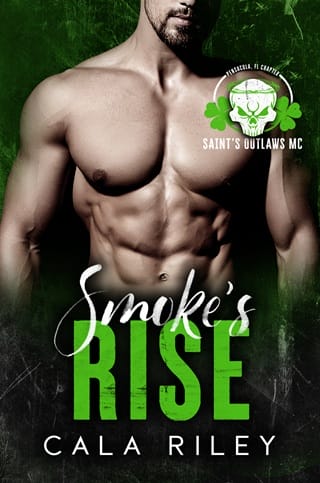Chapter 37
Seattle, Washington
Monday, March 9, 2020
When I pulled up in front of Constance Herzog’s residence on Evanston Avenue North at two p.m. on the dot the next day, I was surprised. If I had been asked to draw a picture of a serial killer’s home, this would have
been it. The whole place was surrounded by a twelve-foot-high laurel hedge. I suspected that the massive root system involved
probably played havoc with the home’s water and sewer lines, but those weren’t my problem.
Almost invisible under a curtain of hanging branches was an iron gate. A short person might be able to come and go through
it without having to bend over. Someone my size definitely couldn’t.
As I stepped out of the Mercedes, I glanced up and down the street, hoping to catch a glimpse of a derelict van, but no such vehicle appeared. However, a bright red Prius was parked directly in front of the house, and I quickly jotted down the license plate number.
One of the concrete fenceposts flanking the gate was equipped with what appeared to be one of those Ring doorbell contraptions.
I was about to push the button when a disembodied voice inquired, “Mr. Beaumont?”
Obviously Constance had been keeping track of my arrival on a monitor of some kind.
“Yes.”
“Hold on, I’ll buzz you in. Please follow the sidewalk around to the left of the house. I’ll meet you there. My studio is
located out back.”
The latch clicked. Bending over almost double, I pushed the gate open and stepped inside. The moment I did so, I understood
the presence of that hedge. The yard was a mess—a massive jungle of weeds and tangled blackberry bushes—and the house itself
was even worse. Once upon a time, it was probably one of those neat little bungalows that popped up all over after World War
II. Now there was nothing neat about it. The wooden siding was pocked by layers of peeling paint. Cracks in the single-pane
windows were covered by strips of yellowed packing tape. Rusty broken gutters dangled from their moorings on the edge of an
aging roof whose cracked and broken shingles were topped by a collection of blue tarps.
The county assessor might be under the impression that the property was worth three-quarters of a million dollars, but this
was clearly the answer to some ambitious developer’s teardown dreams. As for the owner? It was obvious that Constance Herzog
was someone who didn’t give a tinker’s damn what any of her neighbors thought about her lack of home and garden upkeep.
As directed, I headed to the left of the sagging front porch, following a cracked concrete walkway that led around to that side of the house. Someone had cut the blackberries back far enough that I could walk past them without snagging my clothing. My hostess, a short, heavyset woman with a headful of curly white hair, waited at the back corner of the dilapidated house.
“Good afternoon, Mr. Beaumont,” she said with a welcoming smile. “I hope you didn’t have any trouble finding the place.”
“Nope,” I said, “the GPS got me here without a hitch.” I have to say Constance Herzog certainly didn’t look like a serial
killer. She had the appearance of a sweet little old lady who specialized in baking cookies for neighborhood kids and who
went to church every Sunday come rain or come shine. What I noticed right off, however, was the Apple Watch on her left wrist.
The moment I saw her, Constance reminded me of Miss O’Connor, our guidance counselor back at Ballard High. She, too, had been
short and stout. One day, she had barged into my homeroom class and grabbed Mark Bowen, our star linebacker, by the scruff
of his neck. Even though she had to stand on her tiptoes to do it, she had muscled him out of the room. It turns out, Mark
had spit a mouthful of chewing tobacco at a new girl arriving for her first day of school, and Miss O’Connor wasn’t having
any of it. Much to Mark’s surprise, he was benched for the next three games.
This, of course, was a whole different kettle of fish. Constance Herzog’s targets weren’t simply missing playing in a few
high school football games. They were missing the rest of their lives. Keeping that in mind, I put on the most charming face
I could muster, one I hoped didn’t scream cop.
“And the drive was fine,” I added with a smile. “No snow, no ice, no rain. What could be better?”
“Sorry about the yard,” she apologized. “It’s a bit of a mess, but I’m about to unload the place, and the buyer’s not interested in the house or the yard. The lot is big enough that he can put two houses where now there’s only one. He’s been pushing me to sell, but I’m holding out for a better offer. Come on. The studio is this way.”
With that she led me around back and into a building that, long ago, must have been a two-car garage. Stepping inside, out
of the desolation of the yard, was like walking into a whole new world. The interior of Constance’s so-called studio seemed
light and airy, but I was sure something evil was concealed behind all that brightness. Some sixth sense inside me recognized
that this was a predator’s den. As a sixteen-year-old child, Constance had made the decision to take a human life. That’s
a bell you can’t unring, and although that first homicide may have been declared to be justified, the rest of them hadn’t
been.
I paused just inside the door to examine the interior. The space was lit with overhead pot lights. A quilting rack with an
upscale sewing machine not unlike Ellen Mitchell’s sat in the middle of the space directly under what I recognized to be a
ceiling-mounted ductless AC and heating unit. A long drapery rod on one wall held several finished quilts, including the Seattle
cityscape that was soon to be Mel’s.
The other side of the room contained a tiny living area, complete with a kitchenette and a neatly made daybed. Most likely
the two doors at the far end of the kitchenette led to both a bathroom facility as well as a closet. The back wall consisted
of a series of cabinets and pantrylike doors, some of which probably held sewing supplies, but I couldn’t help wondering if
that was also where she kept her supply of fentanyl.
“Very nice,” I said, after looking around the room. “You live here too?”
She nodded. “My mother didn’t believe in doing preventative maintenance. She was also a hoarder. Once she was gone, fixing
what was wrong with the house was way more expensive than redoing the garage. So that’s what I did.
“Most of the time people prefer having their quilts shipped to them,” Constance went on, “but since you were coming to pick
this one up, I thought I’d leave it hanging so you could examine it for yourself before taking it home.”
“Thanks,” I said. “I appreciate the opportunity.”
I walked over to the quilt and made a show of examining it on both sides, not that I had the foggiest idea of what I was looking
for. After what I hoped passed for an acceptable amount of inspection time, I turned to her and nodded.
“This is perfect,” I told her. “My wife is going to love it.” Then I reached for my wallet. “Do I pay now or later?” I asked.
“Now is fine,” she said. “But once we do that, if you don’t mind, I’ll need some help getting it into one of my shipping bags.
I can do it myself, but it’s a lot easier with four hands instead of two.”
“Of course,” I told her. “Happy to.”
She ran my credit card past one of those little cell phone readers. Then I watched as she climbed up on a ladder to retrieve the quilt. After she removed the clips that had held it in place, the quilt came loose, and I caught it as it fell. And there, on the now bare wall the quilt had once covered, was a framed photograph. I knew instantly what I was seeing on the yellowing paper. It wasn’t a mug shot at all. Instead, it was a framed, cut-down version of an old-fashioned Wanted poster of William Landon, the kind that would have been distributed in the aftermath of the armored car robbery back in the fifties. I allowed myself a quick glance, but that was all. I didn’t want to be caught staring.
If Constance had had any idea I was onto her, I’m sure she would have taken pains to get rid of it long before I arrived,
but that’s arrogance for you. Serial killers often regard themselves as the smartest people in the room.
I gathered up the quilt, carried it over to the sewing table, and helped fold it. While doing so, we carried on a polite conversation.
Constance wanted to know what I did for a living. I told her I was retired from selling real estate. Did my wife still work?
No, she’s retired, too. I wanted to keep everything understated and bland, without making her think I was there for anything
other than my buying the quilt. What I was really doing was reveling in the idea that every time Constance Herzog touched
the quilt, she was leaving behind a trail of epithelial skin cells that would soon turn into damning evidence. Once the quilt
was loaded into a clear plastic bag, Constance sealed it shut with strips of packing tape. At that point I wanted to dance
a jig. There’s nothing better than tape—duct or packing—as a source of touch DNA and/or fingerprints.
Twenty minutes after my arrival, I wished my hostess a pleasant afternoon and left the studio, lugging the bag by the bottom
so as not to disturb the places I knew for sure she had touched. The quilt weighed six pounds or so, but to my way of thinking
I was carrying a ton of pure gold. Having already checked to be sure Gretchen Walther would be on duty, I got in my car and
drove straight to the crime lab.
“What’s this?” she asked when I placed the bag on the counter in front of her.
“It’s a quilt that just cost me a cool two thousand bucks,” I told her, “but if you can develop a female DNA profile off this and run it through CODIS, I’m willing to bet you’ll get a match to the ones from the Darius Jackson case here in Seattle and from Jake Spaulding’s over in Liberty Lake.”
Gretchen shot me a scathing look. “Do I need to worry about a chain of evidence here?”
“No, you don’t,” I told her. “I bought the quilt fair and square and have a receipt signed by the lady herself to prove it.
Will that work?”
I handed over the receipt. When she saw the amount, Gretchen’s eyes widened. “You paid two thousand bucks for a single quilt?”
“No,” I replied. “I paid two thousand bucks to legally obtain Constance Herzog’s touch DNA. She threw in the quilt for free,
and she’s the one who handled all the packing tape. How long do you think this will take?”
“You’re in a hurry then.” It was a statement, not a question.
“Of course,” I replied. “Should I hang around town or go back home to Bellingham?”
“It’ll take however long it takes. Lucky for you, I’m something of a hotshot, so go ahead and hang around.”
I did exactly that. And where did I go? Not to any of my old stomping grounds because they mostly don’t exist anymore. Instead,
I headed for the Homicide unit at Seattle PD.
 Fullepub
Fullepub 



